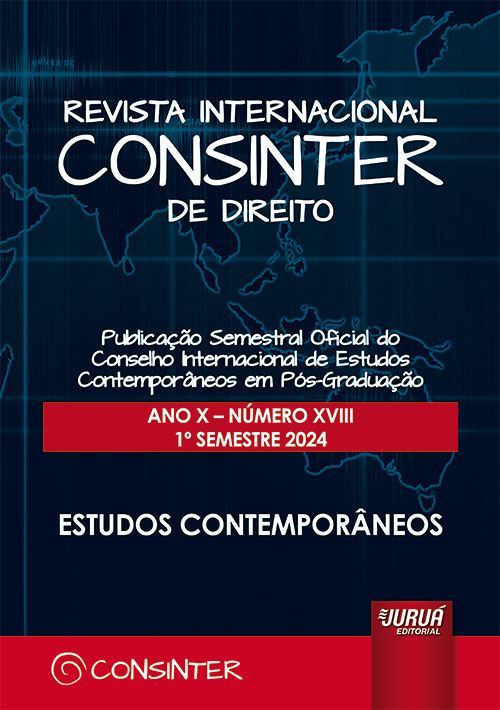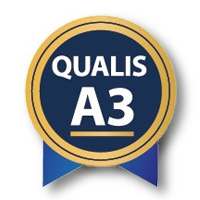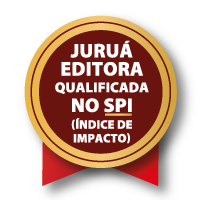Launch by Ratification. What is the scope of the application of Precedent 555 of the STJ to guarantee Legal Security
DOI:
https://doi.org/10.19135/revista.consinter.00018.26Keywords:
Credit tax, Launch by ratification, Launch of the craft, Tax Decay, Precedent 555 of the STJAbstract
The Superior Court of Justice, through Precedent 555, points out 3 (three) requirements so that the statute of limitations, in entries by approval, is counted from the date of occurrence of the triggering event (art. 150, § 4º - CTN): declaration of debt, payment and good faith. The absence of one of these requirements transfers the suspension of this period to the beginning of the following financial year (art. 173, item I of the CTN). The general objective
of the study is to find out the scope of Precedent 555 of the STJ, within the scope of ICMS. In which cases the statute of limitations is counted based on the data on the occurrence of the triggering event and in which cases the statute of limitations is counted from the following fiscal year. The methodology applied was the exploratory deductive method, as analyzing some cases, especially tax benefits declared unconstitutional, Difference in rates - DIFAL and Special Regimes, it was possible to verify in which cases there was launch, payment and, mainly, good faith on the part of the taxpayer. Thus, the following conclusion was reached: the deadline provided for in art. 173, I of the CTN applies in addition to cases of fraud, evasion and conclusion, to cases in which there was a lack of declaration and payment for each specific triggering event. However, even in cases where the tax collector does not make the assessment correctly and the administration needs to register the difference, due to the fact that the taxpayer did not hide the triggering event from the tax authorities, characterizing good faith, I understand that the statute of limitations should be as provided for in art. 150, § 4 - CTN.
Downloads
References
BALEEIRO, Aliomar. Direito Tributário Brasileiro. 11° ed. Revista e complementada por Misabel Abreu Machado Derzi. Rio de Janeiro: Forense, 2001.
BORGES. José Souto Maior. Lançamento Tributário. 2° ed. revista e ampliada. São Paulo; Malheiros; 1999.
CARVALHO, Paulo de Barros. Curso de Direito Tributário. 13° ed. revista e atualizada. São Paulo: Saraiva, 2000. p. 429. No mesmo sentido Sacha Calmon. reportando-se a Alberto Xavier.
BRASIL. Constituição (1988). Constituição da República Federativa do Brasil. Brasília, DF: Senado, 1988.
______. Decreto n. 7.212, de 15 de junho de 2010. Regulamenta a cobrança, fiscalização, arrecadação e administração do Imposto sobre Produtos Industrializados - IPI. Diário Oficial da União. Poder Executivo, Brasília, DF, 16 jun. 2010.
MELO, José Eduardo Soares de. O Lançamento Tributário e a Decadência. In; MACHADO, Hugo de Brito (coord.). Lançamento Tributário e Decadência; São Paulo: Dialética, Fortaleza: ICET, 2002.
SANTI, Eurico Marcos Diniz de. Lançamento Tributário. 2° ed. revista e ampliada. São Paulo; Max Limonad, 1999.
XAVIER, Alberto Pinheiro. Do Lançamento: teoria geral do ato, do procedimento e do processo tributário. 2° ed. reformulada e atualizada. Rio de Janeiro; Forense. 2001.
Published
How to Cite
Issue
Section
License
Copyright (c) 2024 Rosemary Carvalho Sales, Antônio de Moura Borges

This work is licensed under a Creative Commons Attribution-NonCommercial-ShareAlike 4.0 International License.
For universalization and free sharing of knowledge, CONSINTER Journal is indexed under the Creative Commons 4.0 License
Attribution – Non-Commercial Use – Sharing by the same 4.0 Brazil license.
It’s allowed:
– Copy, distribute, display and execute the work
– Create derivative works
Under the following conditions:
ATTRIBUTION
You must give credit to the original author, as specified by the author or licensor.
NON-COMMERCIAL USE
You may not use this work for commercial purposes.
SHARING BY THE SAME LICENSE
If you change, transform, or create another work based on it, you may only distribute the resulting work under a license identical to this one.
For each new use or distribution, you must make clear to others the license terms for this work.
Legal License (full license): https://creativecommons.org/licenses/by-nc-sa/4.0/deed.pt_BR









